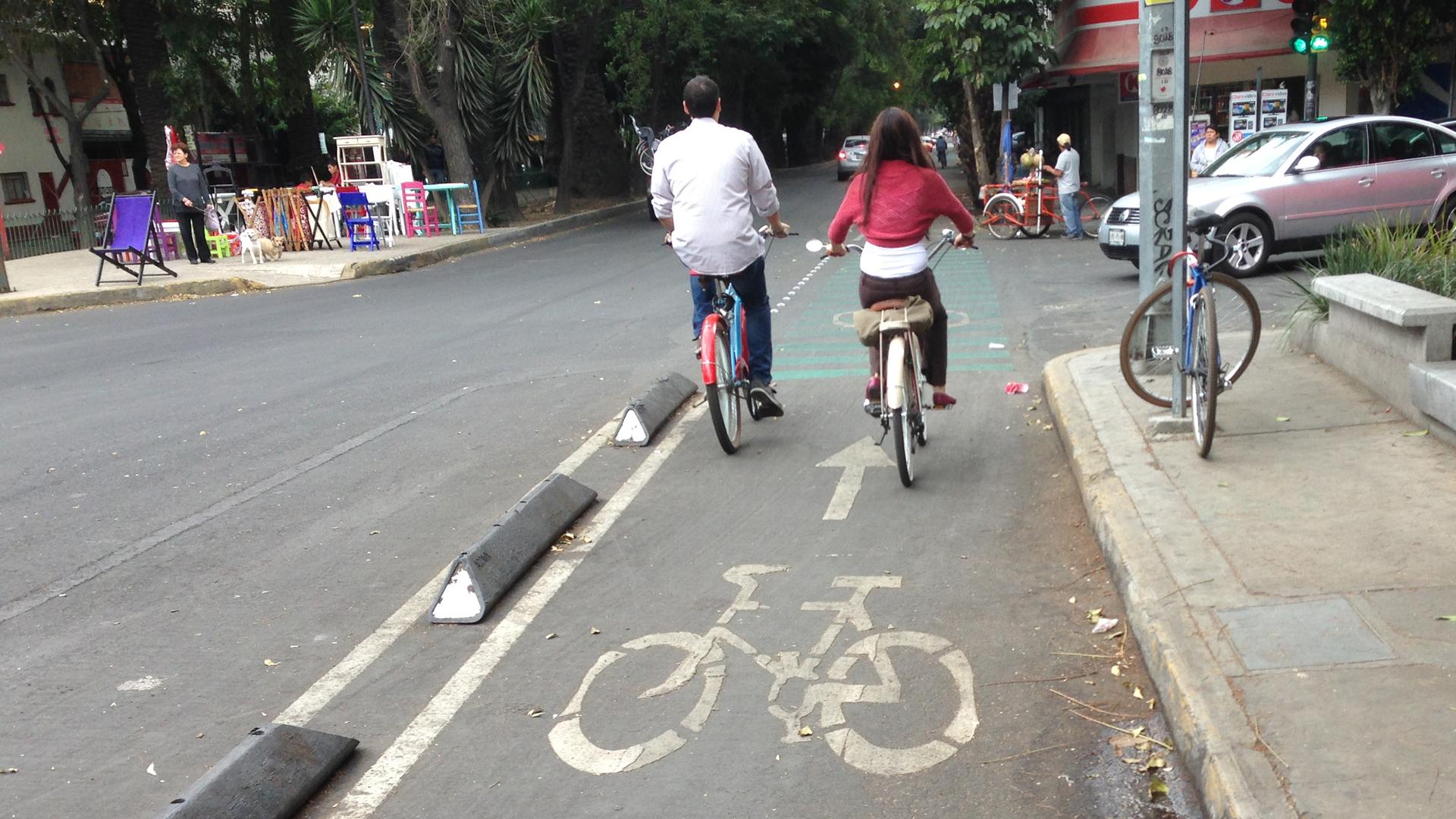The best way to get around traffic-clogged Mexico City may be on a bike
Mexico City now has nearly 40 miles of dedicated bike lanes and plans for many more.
When I told people in Mexico City that I wanted to go cycling, they offered a strong word of caution.
“It’s really scary,” said Ulises Escamilla, my interpreter in Mexico. “You know what, I’m going to walk.”
Escamilla offered a common perspective from non-cyclists. For active cyclists though, the city isn’t nearly so scary.
Every week, about 200 people go on a four-hour night ride through the city. They call themselves “The Bicitekas.” Ivan Sandoval heads the group. He said to call him “El Guajo,” The Turkey, because his friends say he looks like a turkey. (Judge for yourself in the photos below.)
The Bicitekas ride in a pack for fun and also to raise the profile of cycling. El Guajo said they’re trying to create a more human city, to promote non-motorized transport.
He told me about a new commuting contest here between a car, public transportation, a motorcycle and a bicycle. He said they do it to show how fast the bike is. The bike always wins.
The Bicitekas aren’t saying Mexico City is cycling nirvana: They mark cycling deaths here by putting up “ghost bikes,” bike frames painted white, memorials for killed riders. Last year they built two — tragic, but still a very low number for a megacity.
It’s worth noting, the Bicitekas also ride at night when it’s safer. Monica Martinez, who was on the night ride, said drivers still act like they own the road.
“Taxis get angry,” said Martinez. “There have been a lot of accidents caused by a taxi.”
She, and others, say average drivers aren’t much better. You actually don’t need to pass an exam to get a license in Mexico City; testing so was corrupt they did away with it.
Despite it all, Martinez rides six miles, round trip, each day to work.
“It’s better because I don’t have to be in traffic and cars,” she said. Instead, she uses Mexico City’s new bike lanes. The city now has nearly 40 miles of these lanes, half of which was implemented last year, and plans for more. Concrete dividers separate bikes from cars.
From my experience, when I was cycling in a lane, I felt really safe and relaxed. I cycle to work in Boston, where we have a lot of bike lanes. But in Boston, cyclists are separated by a line of paint. Those physical dividers in Mexico City put me much more at ease.
Tanya Muller Garcia, minister of the environment for Mexico City, said the city’s bike infrastructure was modelled on Copenhagen, arguably the most bike-friendly city in the world.
“I think that has been a huge impulse to attract new trips. Why? Because the cyclists are really convinced that this space is for them and that it’s a secure area where they can cycle,” Garcia said.
Cycling is also good exercise and cuts down on smog and greenhouse gasses. But — there’s always a but — just how practical is cycling in Mexico City? The place is huge.
“It’s very effective for short trips,” said Muller. “On average, 50 percent of our trips that we all do on a daily basis, they’re eight kilometers (roughly five miles) or less.”
You can also rent a bike at stands throughout parts of Mexico City.
Often times though, there’s not a bike lane where you’re going. Riding with the sharks, that’s unsettling in any big city, especially if you’re not an experienced cyclist. Most people in Mexico City aren’t.
My interpreter, Ulises Escamila, hadn’t cycled in 25 years. I kind of cajoled him into cycling a few miles with me to check out the scene.
“I feel really really rusty, and I don’t feel like I have control of the bike,” said Escamilla — a big, athletic guy — during our ride.
He’s typical of many raised here — Mexico City residents just don’t bike that much, even as kids. Bicycling enthusiasts are aware of this.
Each Sunday, El Paseo de La Reforma — a major corridor in the center of Mexico City — is closed off, transformed from a traffic-clogged artery to a pleasant place to ride a bike. Or just sit on one.
Adults were pedalling backwards while an instructor held the handlebars. They’re just getting used to being on a bike.
Angelica, 41, was too embarrassed to give her last name, but she was on a bike. She said she never learned as a little girl. She said doesn’t want to be a cycle commuter, she just wants to ride with friends.
She might say that now.
Tanya Muller in the mayor’s office says the hope is that once the Sunday riders see how fast, safe, and fun biking can be, many of them will end up ditching the car during the week as well. Many of them already are.
